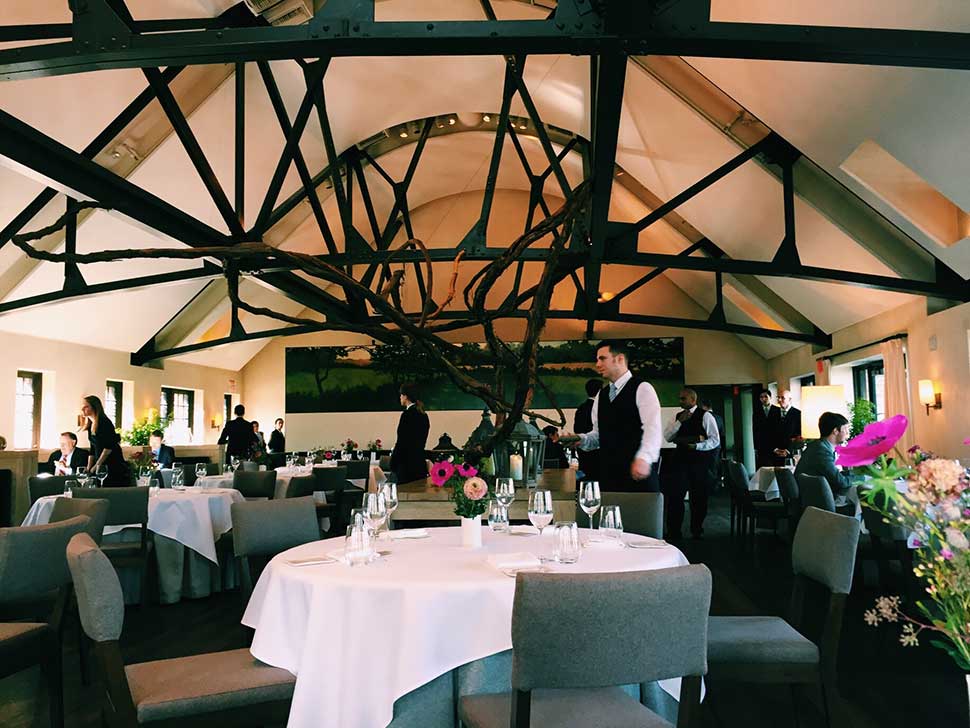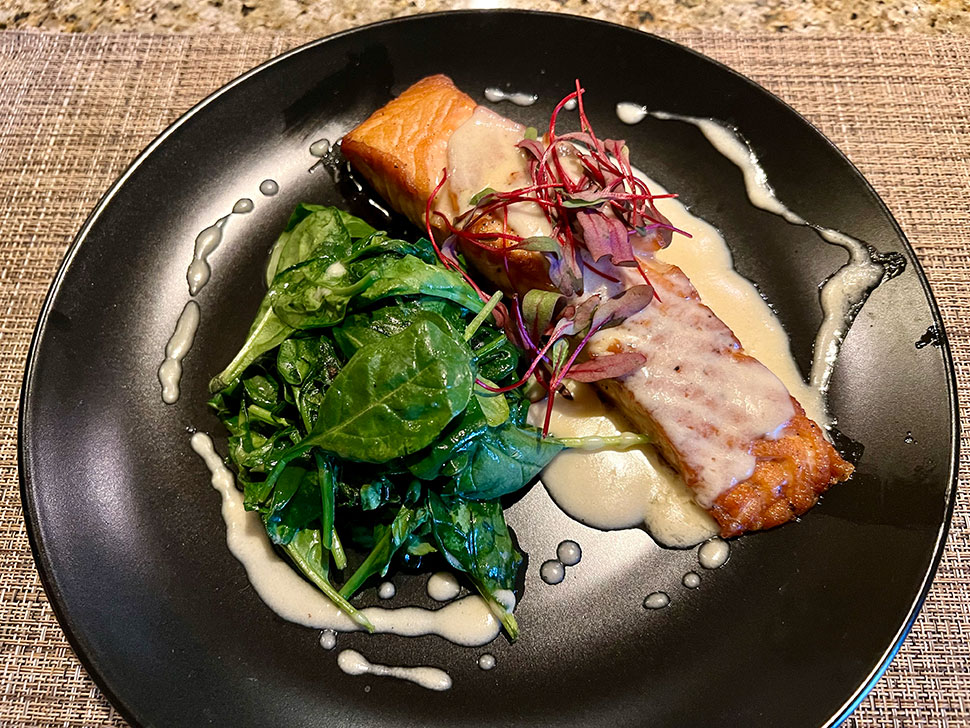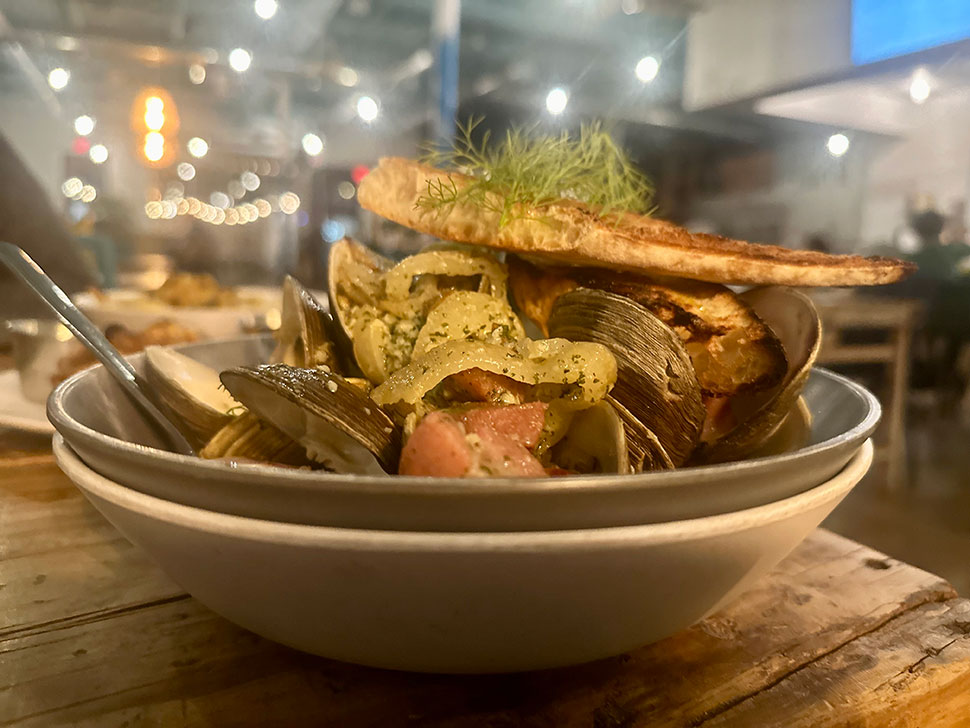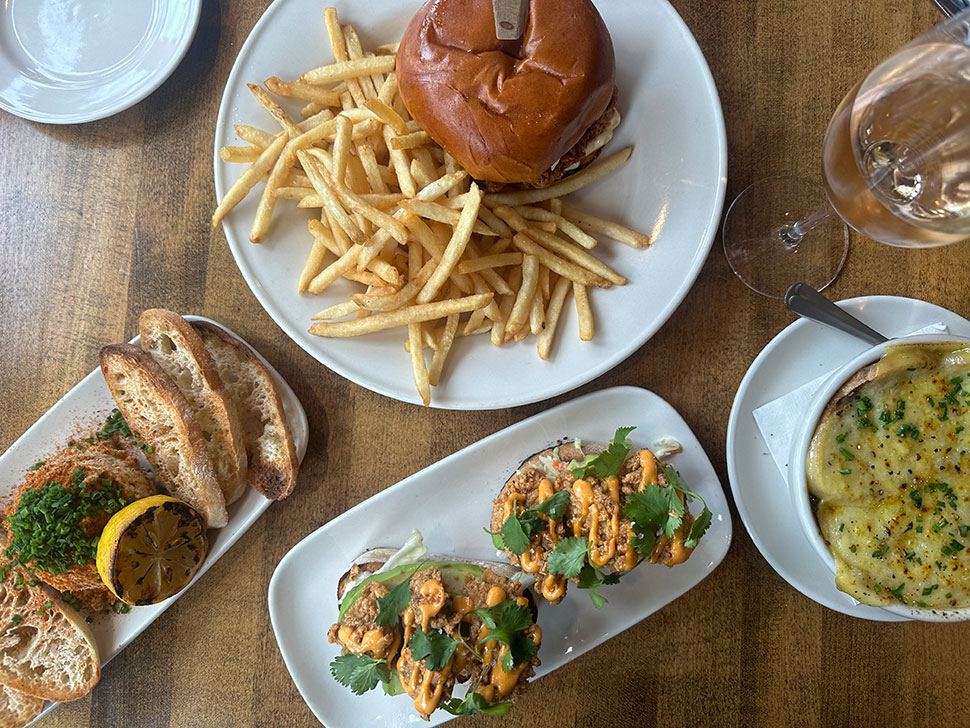Blue Hill at Stone Barns

Have you ever been to Blue Hill at Stone Barns?
We’ve been meaning to for ten years, and finally made it. Reservations are a bit easier to snag in the winter; we opted for lunch and off we went for the long drive to Pocantico Hills. A daytime visit turned out to be a great idea, because you will want to see this stunning spot in sunlight. The eighty-acre farm was once part of the Rockefeller estate and the mammoth stone barns were commissioned by John Rockefeller for a dairy. It’s a beautiful drive through the fields and up the hill to the grand European-inspired structures. But make no mistake, as glam as it all is, this is an agricultural institution, a working farm, and plenty is going on behind the scenes. Stone Barns is home not only to a gastronomic restaurant, but an agricultural center for educating future farmers, a place to develop sustainable farming practices and increase public awareness of healthy, seasonal food. In essence, the James Beard Award winning chef and co-owner, Dan Barber, aims to change the way we eat. He’s been promoting the local food movement at Stone Barns since 2004. His intention, to blur the line between the dining experience and education, succeeded astonishingly well during our four hour lunch.
Farm or not, it’s a fancy place and jackets are required. Upon entering the spare and gorgeous dining room, you’ll notice that there are more servers than customers, and even your oversized bag will get it’s own velvet stool. Don’t say I didn’t warn you. We were seated in the European style, next to each other, looking out on the hushed dining room. Perfect, actually, to have a front row seat for the food-as-theater that was about to unfold. Our earnest young waiter brought us up to speed. There is no menu, a tasting of twenty-five to thirty-five mainly vegetable courses would be offered, and he was happy to make any changes necessary for dietary restrictions.
While our wine was served (low sulfite and delish), suited waiters wandered the room with giant vegetables on platters: a humongous kohlrabi here, a head of cabbage there. And then the first course arrived…a few bits of greens and broccoli skewered on wire on a wooden stand. Next, a small but perfect carrot presented on a plate. And after, a flower was proffered, an edible frond of fennel. Each course was served by a different and equally solemn chef or waiter with a bit of explanation or, occasionally, none. Were they laughing at us behind our back? Watching this parade of dedicated diners plop down over $200 per person for a carrot? It was hard, at first, to take it all as seriously as everyone else seemed to. But then the courses veered from finger food and it became easier to justify. You, too, will wonder at the sweet pressed squash juice and the poppy pods used to sprinkle seeds on radish “crackers”. We were delighted by cabbage cooked in coals and served like pie with a hefty sprinkling of caviar. And the fermented beet steak with sublime souffled potatoes and a spoonful or two of creamed spinach alongside. A meat course of one perfect slice of Berkshire pork. A witty take on breakfast: celery root cut like a grapefruit with popped quinoa and quince jam. Squash tartare. A silky foie gras from a flock that is never force fed, slivers of fresh speck, circles of tempura squash, pig popcorn, turmeric tea. The mostly vegetarian menu with meat mainly used as a flavoring, means you’re not overwhelmed and the pace of the meal keeps you entertained (as does the surprise and delight of neighboring diners).
And on it went. Silent servers passing the most gorgeous miniature and odd dishes. Just when we were wondering how many more courses and how long this lunch might pan out to be, our waiter asks if we’d like to take a walk. We stroll into the bustling kitchen and are shown to a stand up bar for the next two courses. After the hushed quiet of the dining room, the bustle of the warm kitchen is a lively diversion. The sous chef next to me was carefully slicing the slimmest slivers of beets and plating them for beet pizza and placing shards of vegetables within the “branches” of mini-trees for service. We had a warm welcome from Dan Barber himself, and a quick visit to the bakery with it’s very own mill, and then back to our seats for MORE.
And between each course, the plates were cleared, the table bussed. But this is not meant to be purely a gastronomic treat. This is an educational institution after all. You’ll learn about the latest developments in experimental vegetables and how they cook them. You’ll hear about unusual processes like twenty-four hour roasting of winter vegetables (an iPad was produced for a time lapse video), and the development in collaboration with Cornell of perfecting potatoes so they don’t need butter. And don’t be taken aback when your server pours the beef tallow from the candle into the salad dressing.
Virtually everything you’ll eat is grown, bred, cooked and baked on premise, down to the hand-milling of wheat for the phenomenal breads and pastries. It’s a precious and intense experience, but extraordinarily inventive, too. Although I can’t imagine another three to four hour meal marathon anytime soon, given the delicacies they whipped up from meager winter crops, I would love to see Dan Barber let loose on fresh, sweet corn, heirloom tomatoes and baskets of berries. Come summer, I might be back.
Good to know:
Bring freezer bags! The Shop at Stone Barns sells the farm’s heritage meats, plus a wonderful stock of cookbooks, cooking paraphernalia, gifts and kids toys.
The Tasting Menu (at a whopping $218, ouch!) is the only offering for both lunch and dinner.
Farm tours of various lengths are offered, so check the website for details before you go: www.stonebarnscenter.org













